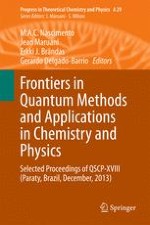This edited, multi-author volume contains 14 selected, peer–reviewed contributions based on the presentations given at the 18th International Workshop on Quantum Systems in Chemistry, Physics, and Biology (QSCP XVIII), held at Casa da Cultura de Paraty, Rio de Janeiro, Brazil, in December 2013. It is divided into several sections written by leaders in the respective fields of quantum methodology applied to atomic molecular and condensed matter systems, each containing the most relevant material based on related topics. Recent advances and state-of-the-art developments in the quantum theory of atomic, molecular and condensed matter systems (including bio and nano structures) are presented.
